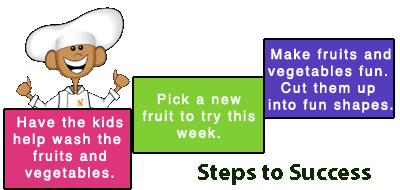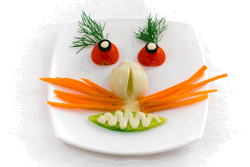Talking About Healthy Foods With The Kids - Fun Food Facts

I have mentioned in other articles about talking about food with children and sharing food facts to make it interesting for them.
Here is a list of some of the food facts I have shared with my children during meal time.
It is a great way to start the conversation for eating healthier foods.
Meal time is another time to remind kids that foods are very interesting and fun. Here are some food facts you can share with your children.
Take a look at some of the interesting healthy food facts below:

-
1 cup of strawberries contains only 50 calories while providing 100 mg of vitamin C and 2 grams of fiber.
-
California produces over 80% of the strawberries grown in the United States.
-
Parsnips, a fall vegetable, are related to carrots. Baking them brings out their sweet, nutty flavor. They can be enjoyed raw too; try grating them onto a salad or on top of a soup.
-
Native Americans used berries as a fabric dye. Berries and their leaves and roots were also used for medicinal purposes.
-
A small orange is about 80 calories and contains vitamin C and carotenoids.
-
Carotenoids are plant pigments responsible for the yellow, orange, and red color in fruits and vegetables. Carotenoids serve as antioxidants.
-
When people think of vitamin C, they think of colds. Vitamin C does play a role in the immune system but it has many other roles including helping to form collagen and maintaining healthy teeth, gums, and blood vessels.
-
Chinese royalty enjoyed melon seeds as early as 200 BC. The seeds were believed to be essential for good intestinal health.
-
Marco Polo brought melon seeds to Europe after enjoying strips of sweet dried melon in Afghanistan. Dried and roasted seeds are still consumed as snacks in South America and the Middle East.
-
Melons are in the same gourd family as squashes and cucumbers.
-
There are two groups of melons available: watermelons and muskmelons. The most familiar muskmelons include cantaloupe and honeydew.
Healthy Eating

Healthy Child

Written by Anne Kolker
•
Written on Nov 06, 2011
•
Last updated on Sep 30, 2013



0 Comments